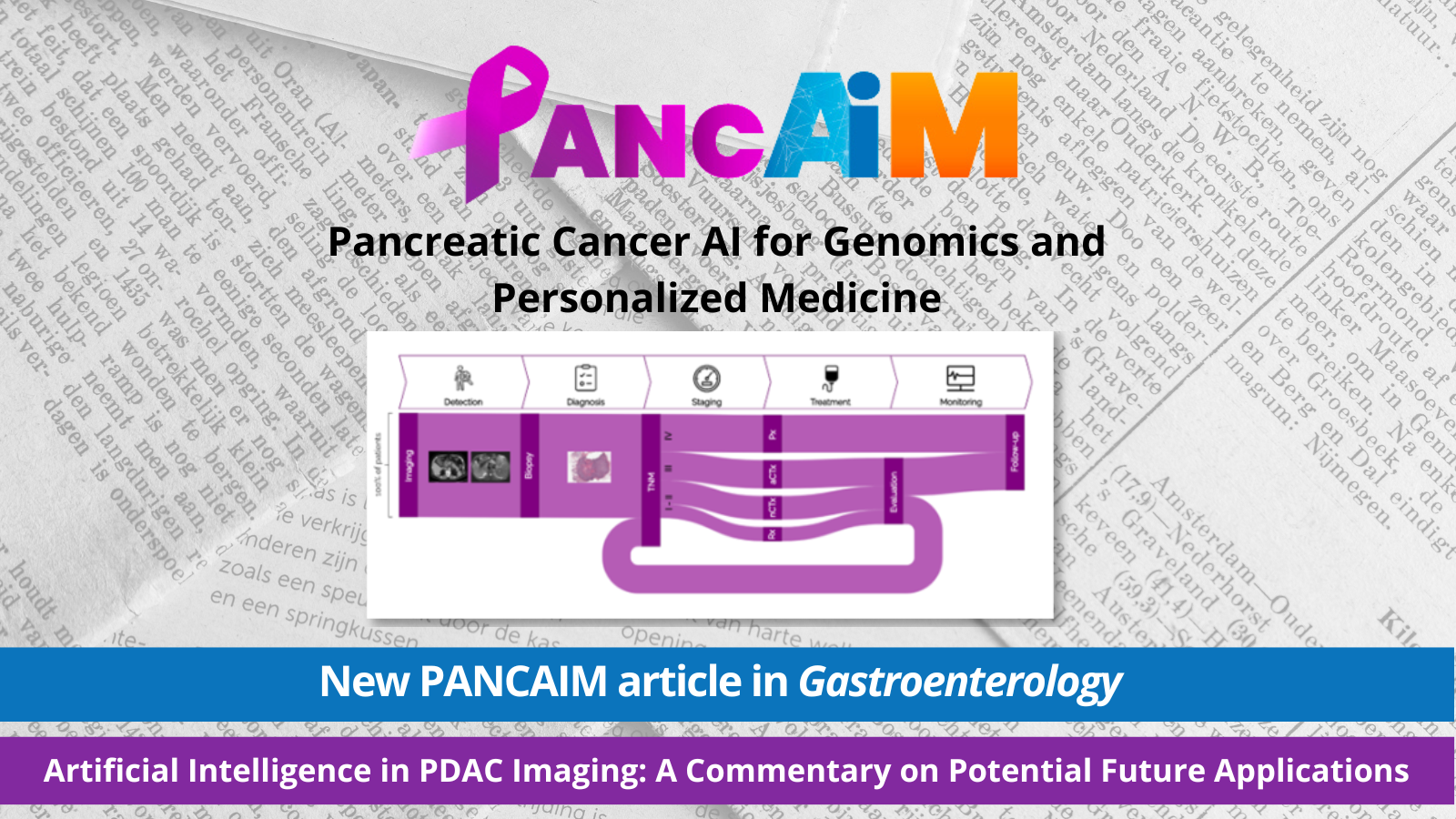We are happy to share that the article “Artificial Intelligence in Pancreatic Ductal Adenocarcinoma Imaging: A Commentary on Potential Future Applications” will appear open-access in Gastroenterology journal of the American Gastroenterological association.
A preprint is already available here: https://doi.org/10.1053/j.gastro.2023.04.003. The published version will shortly appear in the same place.
Main authors Megan Schuurmans and Natália Alves from Radboud UMC were supported by colleagues Henkjan Huisman (PANCAIM Coordinator), Pierpaolo Vendittelli, and John Hermans. In a real team effort, further PANCAIM consortium partners contributed to this work by review & editing, including Geert Litjens, David Chang (University of Glasgow), Caroline Verbeke (Oslo University Hospital), Núria Malats (Spanish National Cancer Research Centre), and Matthias Löhr (Karolinska institutet). This makes this article a real international, multi-disciplinary and multi-institutional effort with contributing researchers consisting of AI experts, pancreatic radiologists, pathologists, and surgeons.
Cross-sectional imaging such as computed tomography (CT) plays a crucial role in PDAC (pancreatic cancer) management. In the last years, Artificial intelligence (AI) has gained considerable interest in oncology, as it has the potential to support clinicians and ultimately guide decision making at each step of the patient pathway by focusing on well-validated applications at meaningful clinical touchpoints. AI applications can leverage high amounts of data to produce individualized recommendations based on each patient’s clinical picture.
But while the number of publications on AI for clinical decision-making in oncology has increased exponentially in the past few years, AI research in PDAC is still at a preliminary stage compared to other cancer diseases, with limited private and public datasets and a lack of independent, external model validation. As a result, no AI applications have been implemented in clinical practice for PDAC.
The article identifies the definition of the research questions to be addressed by AI algorithms as a first step towards developing clinically-relevant AI and suggests to do so based on five steps in the patient pathway:
- Detection
- Diagnosis
- Staging
- Treatment
- Treatment monitoring
In each step along the patient pathway, the articles identifies the critical touchpoints that are lacking in clinical practice, where image-based AI could have the greatest impact for patients and clinicians.
In general, the authors find that AI holds the potential to bring transformative changes into healthcare, and PDAC is particularly suited to benefit from AI research and the development of commercial applications since current clinical practices still lead to poor patient outcomes.
